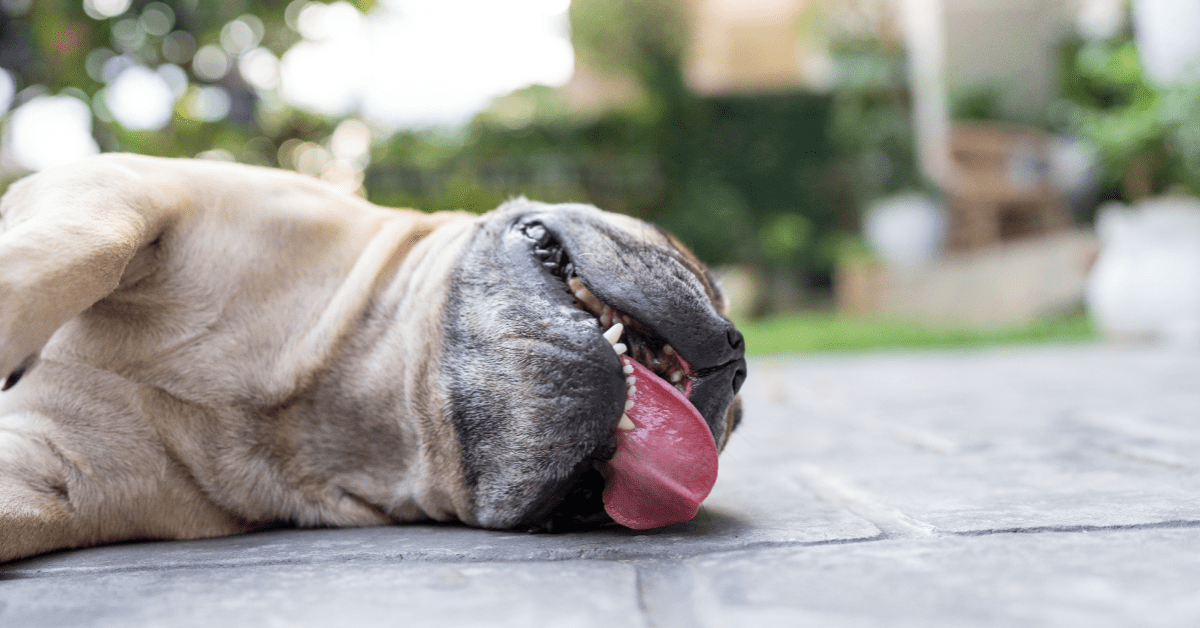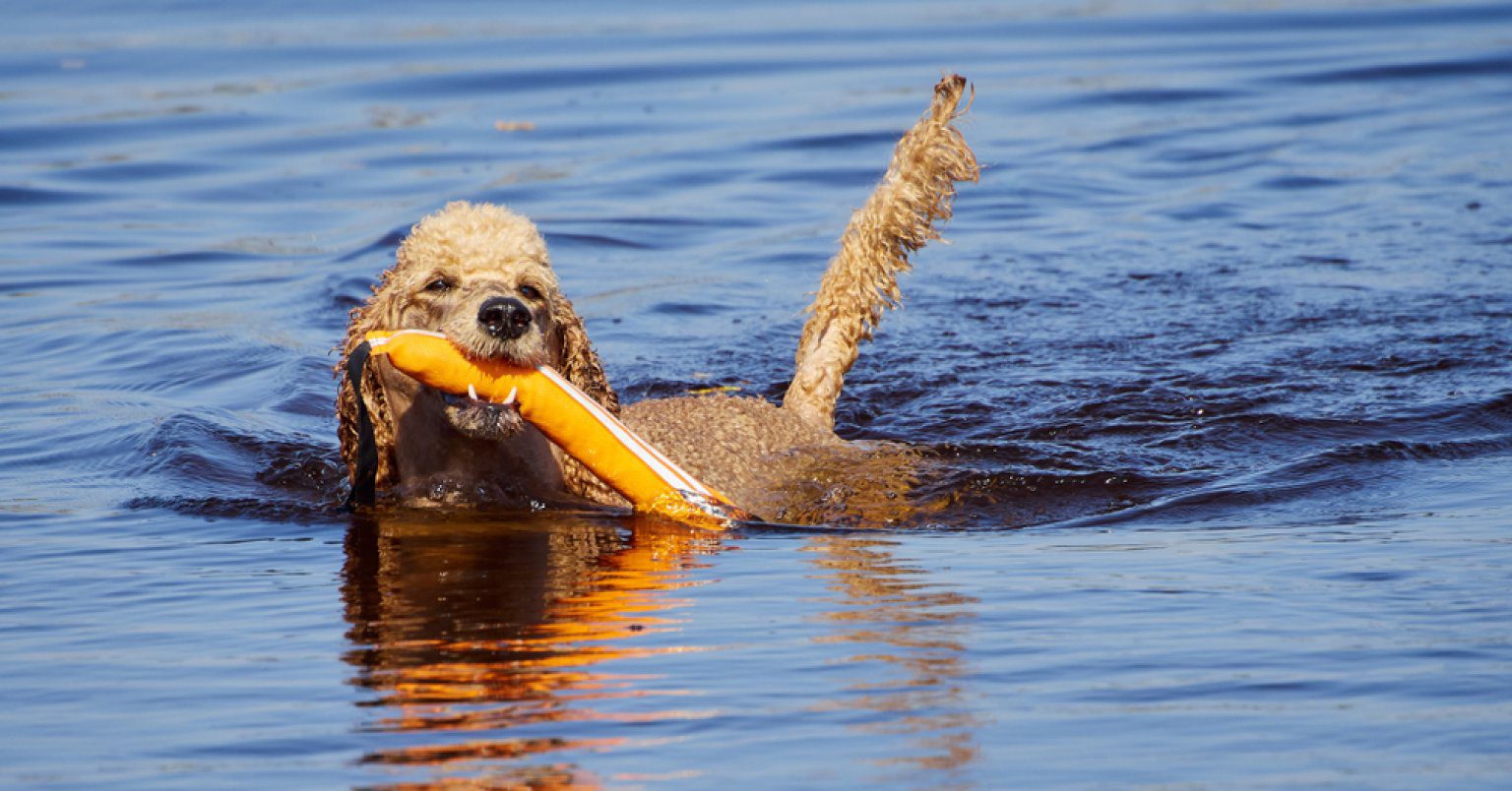- Pumpkin Team
- Feb 2, 2024
- 8 min read
Updated: Jul 25
Key points
Dogs DO sweat — they just sweat in a different way to humans do, and their sweat glands don’t do much to cool them down, unlike human sweat glands
Dogs cool themselves down in other ways — like panting and internal processes that cool their blood as a way to regulate internal temperatures.
But it’s easy for dogs to overheat — so the dog’s humans need to help out by finding shade, offering more water, and so on.
When it comes to keeping cool in the hot summer months, humans sweat to drop their core temperatures. Dogs, on the other hand, use different methods — like panting — to fight overcome warm weather. But did you know that dogs also sweat?
Canines, just like their human companions, sweat through glands on their bodies. However, sweating is more than a way for dogs to cool down. Sweating is actually quite ineffective at dropping a dog's body temp.
This article will uncover how, why, and when dogs sweat, digging into the different ways dogs regulate their body temperature and ways you can aid in the cool-down process. Plus, we’ll dig into the common signs of dog overheating, outline ways to prevent heat stress and break down the most common dog-related hot-temp questions.
Why do dogs sweat?
Unlike humans, who will drop buckets of sweat during high temps to cool off, sweating is an ineffective way for your pup to fight off intense heat. In fact, dogs don’t produce that much moisture from their sweat glands.
So why do dogs sweat?
Though dogs do sweat through their paws as a way to slightly lower their body temperature, canines also secrete through their sweat glands as a way of communicating with other dogs through scent.
How do dogs sweat?
Dogs sweat through two different types of sweat glands — merocrine and apocrine — which are located throughout their body.
Merocrine or eccrine glands are located on the bottom of your dog’s paws and other areas with minimal fur. Merocrine sweat glands secrete moisture when dogs heat up or become stressed, though the amount of sweat released is typically minimal. You can observe this type of sweat gland working when you see wet paw prints on the ground on warm days.
Apocrine glands are connected to every hair follicle on a dog’s body and produce pheromones (similar to human body odor). These pheromones allow canines to communicate with one another on a chemical level. Though apocrine sweat glands are considered sweat glands, they produce an oily substance instead of typical perspiration.
How do dogs cool themselves down?
Sweating through their paws is just one way dogs cool down. They also have other, more effective ways to regulate their body temperature — like panting and vasodilation.
Panting
Panting is the act of breathing in and out quickly. When your dog pants, a fast inhale and exhale humidifies the air, stimulating the moisture in your dog’s nasal passages, airways, and lungs to evaporate. This process — also called evaporative cooling — is what helps drop a dog’s internal temp on high-heat days.
Vasodilation
Vasodilation is the expansion of blood vessels inside your dog's body, which pushes warm blood to the surface, where it can cool down and effectively drop their internal temperature. Vasodilation is especially effective around the ears and face, which can trigger red spots to appear on the skin where hot blood is rising to the surface.
Though panting, vasodilation, and the small amount of sweat dogs produce can aid in cool-down efforts, overheating dogs often struggle to return to a normal temperature. So, just like you’d jump in a cold pool or pump the AC during periods of high heat, dogs often search for other ways to chill out — like shade, water, and cool ground.
How can I keep my dog cool?
Because dogs are covered in a layer of fur, regulating their body temperature in warm weather can be difficult — that's when pet parents need to help out. By staying cautious and proactive (and learning the signs of an overheating pup), you can help your dog stay safe while enjoying the sunshine.
Fortunately, there are plenty of cool-down routes dog owners can take to limit their dog’s heat exposure. These include the following:
Make sure your dog has access to shade while outside. Though shade can’t offer complete protection from the heat, it can offer relief from harsh sun rays — which can be dangerous for both you and your dog. So bring an umbrella or stick to areas with shade if you’re adventuring outside with your dog in hot weather.
Keep fresh water for drinking on hand at all times. Access to cool water — especially during periods of increased exposure to heat — is critical. Hydration plays a key role in temperature regulation, and a dehydrated pup is more likely to experience heat stress. So, make sure you keep extra water on hand when out and about with your dog.
Stay inside during scorching hot days. Though dogs can handle some heat, if the temperature rises quickly, it can be dangerous for any pup. Instead of potentially burning their paw pads on the hot ground or sending them into heat stress, stay in during heat waves.
Take plenty of breaks when playing outside. When exercising outside, make sure your dog takes plenty of breaks in between for water and rest — especially if you notice an increase in panting or other odd symptoms.
Walk your dog earlier in the morning or evening hours. Dogs need plenty of exercise, even during warmer seasons. So, try to take walks when the temperatures are more mellow, like early morning or evening.
Use cooling clothing. If your dog is going to be outside for long periods or is sensitive to heat, consider using cooling vests, which help stimulate evaporative cooling.
Never leave your dog in an un-airconditioned vehicle. No matter the situation, never leave a dog in an unattended vehicle when temps are high. Though it may only be a moment for you, temperatures skyrocket quickly once the car is off, which can be dangerous for your furry friend.

Will shaving my dog cool them down?
Whether or not you can shave your dog depends on your dog’s coat type. Dogs with single-layer coats, like Poodles or Dalmations, are generally okay to shave short (though you should check with a trusted groomer or veterinarian before trimming down their fur).
On the other hand, you should never shave double-coated breeds, as it can impede their bodies' natural temperature-regulating processes. Brush them out, though, to get rid of extra fur hanging around after it’s fallen out.
What are some signs of an overheating dog?
Though there are plenty of cool-down methods owners can use, sometimes dogs overheat despite our best efforts. When this happens, understanding the signs of heat stress and knowing what steps to take immediately can help you avoid more serious health issues.
If left untreated, dogs can experience heat exhaustion and eventually heat stroke — a condition that can be fatal without urgent care. And though some dogs have a higher heat tolerance, all dogs have the potential for overheating — whether from hot environments or overexertion.
Below are some common signs your dog may be experiencing heat stress:
Heavy panting
Bright red tongue, gums, or ears
Lack of coordination or stumbling
Slow, lethargic movements
Abnormal drooling
Showing signs of discomfort
A rapid heart rate
Wide eyes
Seeking out cool areas
Even with proper treatment, dogs exposed to high heat for long periods can be at risk for heatstroke. So, it’s best to take your dog to a veterinarian should their symptoms worsen or last longer than 24 hours.

Heatstroke in dogs
Heat-related complications come in phases, starting with stress, working up to exhaustion, and finally heatstroke. Heatstroke occurs when a dog’s body temperature scales above 106 degrees Fahrenheit.
Unfortunately, untreated heatstroke in dogs often leads to fatality, which is why you should take quick action at the first signs of heatstroke, which include:
Continued excessive panting
Elevated body temperature
Irregular heart rate
Loss of consciousness
Collapsing
Pale-colored gums
Mental confusion
Seizures or muscle tremors
Dark or red urine
Vomiting or diarrhea (may be dark due to dehydration)
What to do if your dog is experiencing heat stroke
Though heatstroke will require care from an emergency vet to reverse the effects, there are ways owners can slow the complications and avoid irreversible damage.
Slowly pour room-temperature water (not cold) onto your dog, focusing on the head, ears, and stomach. Avoid putting anything frozen or too cold on your dog, including wet towels or ice packs, which can worsen their condition.
If you’re unable to seek immediate veterinary care, remove your dog from the direct heat and into a ventilated space to help slowly drop their internal body temperature as much as you can.
Help your dog drink small amounts of cool water to encourage internal evaporative cooling. Just make sure to control their intake, as gorging water could result in vomiting, worsening their condition.
Dehydration in dogs
Caused by lack of moisture in the system, dehydration in dogs is easy to treat — so long as continued dehydration doesn’t continue. Symptoms include:
Loss of skin elasticity
Refusing to eat
Sticky, dry gums and tongue
Thick or foamy saliva
Droopy, sunken, or dry eyes
Lethargic
Vomiting
Diarrhea
Excessive panting
Dry nose
If your dog is refusing to drink water, seek immediate veterinary care.
Treating an overheated dog
Though heatstroke requires specialized medical care, owners can often treat heat stress from home — so long as symptoms don’t worsen. When in doubt, always seek veterinary help.
Should your pup show signs of overheating, move to a cooler area, encourage them to drink water, and allow them time to regulate on their own. After 10 to 20 minutes, a recovered dog should cease panting and return to normal.
However, owners should apply caution when pursuing at-home treatment, keeping a close eye on any abnormal or worsening symptoms.
How hot is too hot for my dog?
Depending on the breed and their ability to tolerate heat, temperatures over 82 degrees Fahrenheit can be dangerous for canines. However, prolonged exposure to heat, even at lower temperatures, can cause heat stress without proper cool-down conditions.
That said, regular exercise is critical for dogs — even in hot temps. So, whether you’re headed out on a summer hike, a walk around the park, or a game of fetch, exercising your dog in high heat will require extra precautions.
For example, take care during walks on hot summer days, opting for late evening or early morning strolls instead of during the midday heat. If you’re sticking to at-home fun in the sun, consider purchasing a plastic kiddie pool and filling it with clean water for your pup to relax and play in.
Which dog breeds are more sensitive to heat?
Though every dog will have a different tolerance to heat, certain breeds are more susceptible to heat stress and require careful supervision when outside in high temps.
Brachycephalic breeds (flat-faced) are more sensitive to heat, like French bulldogs, Boston terriers, English bulldogs, Pugs, and Boxers.
Hairless dogs, like the Chinese crested or Mexican hairless, can be more sensitive to heat because they do not have hair to protect their exposed skin.
Thick-coated dogs can have a harder time cooling down than other dogs.
Darker-coated canines often struggle to regulate their body temperature because their coat absorbs heat. Like black clothing, a black coat will be warmer in the hotter seasons.
Overweight dogs may have difficulty regulating their temperature because of poor blood circulation.
Senior dogs are more sensitive to nearly every element, including heat.
Puppies are sensitive to the world around them, just like senior dogs — and heat is no exception.
Keeping your dog cool – that's no sweat!
When it comes to sweating in dogs, the process is less for cooling and more for spreading natural pheromones. Instead of dripping sweat, dogs will pant, and their blood vessels will expand to help cool their body from the inside out. As a dog parent, it's important that you help your canine companion stay safe and cool during warm weather by keeping water on hand, finding shady areas to rest, and monitoring for signs of heat stress.

